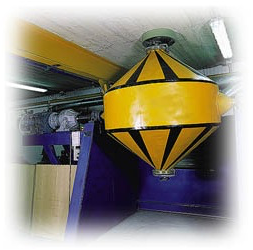STADLER; S:A’s innovative technology is applied by its highly qualified technical team which together with its “Simple but complete” organisational structure makes it possible to work in close cooperation with customers, with a view to understanding their concerns and satisfying their increasing requirements.
A sound investment policy and the allocation of substantial resources to renovation and acquisition of the latest-generation production machinery and equipment have secured a privileged position for STADLER, S.A. in the sintering sector.
Who we are?

Products
Quality

Contact
Advantages
Technical properties
- Structural parts with complex forms.
- Controlled porosity ( self-lubricated bushings).
- Large runs of parts with tight tolerances.
- High precision and good surface finish.
- Special properties such as resistance to wear and hardness.
- Good behaviour under fatigue and absorption of vibrations.
- Parts finished without any need for machining.
Economic Advantages
- Very competitive prices compared to other manufacturing methods.
- Lower investment as the customer avoids use to other machines for secondary operations or finishing operations.
- Practically 100% of the raw material is used.
- High level of energy saving.
- Non-pollutant technology.
MANUFACTURING PROCESS
DISCOVER OUR MANUFACTURING PROCESS

RAW MATERIAL
The metal powders and their additives are acquired from highly specialised companies of recognised standing approved by international organisations.

MIXING
The various raw material components are measured by computer and put into the mixer, with a view to achieving and homogenous mix of its components.

COMPACTING ( PRESSING)
This is done in automatic presses at ambient temperature using special tooling, at a rate of from 200 to 1000 parts per hour, depending on their complexity and volume. In this operation, the metal powder takes on the shape of the mould and a green strength which allows for handling within the plant.

SINTERING
Compacted parts are subjected to heat treatment, in atmosphere controlled furnaces, which brings about a solid-state crystallization known as sintering. During this sintering process, the compacted parts acquire their physical properties and undergo slight dimensional changes.



